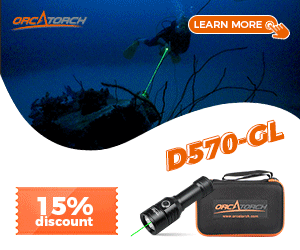No one was trying to push to sell me anything. My shop is a authorized Zeagle and Atomic dealer. They could care less in terms of money, I have spent enough money there to where the difference between the F8 and a B2 is pittance. They are virtually the same price. They are virtually the same reg besides mechanics too as Zeagle is now using Atomic's seat saving design.
Zeagle and Atomic are owned by the same company.
I live in Naples, people around here have more money than they know what to do with, my shop doesn't care about my 1 regulator sale.
I am sure they do. They can't stay in business if they don't sell anything.
I was merely pointing out the differences between a piston reg and a diaphragm reg. The difference is clear, a piston reg can pump out more air than a diaphragm. This is why ScubaPro holds the record with a piston reg, because they can pump out absurd amounts of air, because unlike a diaphragm reg a piston reg can open all the way up.
This was a marketing gimmick. The first stage was not on a standard tank valve. A standard tank valve cannot flow that much gas.
Now there is debate on whether or not someone can actually over breathe a diaphragm reg, so far many posters have claimed that its impossible to do, but so far I have seen nothing but speculation. One person posted the ScubaPro record of 134 divers but I am not sure how that helps the argument, because we are talking about over breathing a diaphragm reg. The record was set with a piston reg.
Someone has already mentioned to you that you were likely suffering from CO2 build up when fighting off the groupers. If you want a simple test, purge your diaphragm regulators first stage. Can you breath all that gas? I don't think so. A MK-25 can pump out a lot of gas, but it is constrained by the tank valve and the second stage.
Another poster said to turn my tank on at sea level? I am not sure how that helps the argument either because things would be totally different at 120 ft.
I have no idea what they were getting at, but in Naples you are at sea level.
Then there is the post about diving a piston reg in cold water, and no I haven't done it, but many of my diving friends have and say they work fine as long as they are packed. One of Sherwood's cold water regs is a piston as well and uses pressurization to keep elements out of the first stage. So not sure if your implying a piston reg cannot be used for cold water diving but it goes against everything I have been told, by some divers I really respect and have hundreds of hours under water.
The question is how cold is cold? A piston regulator is usually fine into the low 40s - upper 30s, after that the risk of freezing increases. In the past, most piston regulators could be sealed using grease. Now only Atomic recommends this. Also you need to be careful, if the person packing the regulator leaves gaps this traps water and causes corrosion. Sherwood uses a dry seal system with a flow-by piston. Their first stages are not high performance. Also where are your friends diving? If in Florida, cold water is in the lower 60s.
My original post that got this firestorm going had nothing to do with me advising the op to get a piston reg, I was simply sharing what I learned on my journey in deciding between a piston reg and a diaphragm reg, and that I do mostly warm water diving so its piston reg for me and if I really want to cold water dive I will get my B2 packed. Maybe the op will always be cold water diving and a diaphragm reg suits him better.
Many people who posted in this thread are dedicated cold water divers. They know what to use. Apeks regulators are widely used in the tech diving community and they are all diaphragm regulators. When the US Navy did their cold water tests IIRC, only diaphragm regulators made the cut. Although they did not test every regulator on the market. Their top pick was Poseidon.
But at the end of the day lots of people are claiming there is no difference between a diaphragm reg and a piston reg as far as performance goes, but that is simply not true. A piston reg can deliver a lot more air. Period.
Deliver the air to what? The constraint is the second stage.
It would be like you telling me I have a choice between 2 cars, one of them goes 100 mph and the other goes 200 mph. You insist I only need the car that goes 100 miles per hour because due to road conditions I can't go over 100 mph anyway. But your speculating you don't know that for sure.
It is more like putting speed rated tires on a Yugo. The tires can go faster but the constraint is not the tires but the car itself. To the diver we are constrained by the second stage.
For me I don't really see the benefit of a diaphragm reg unless your always diving cold water, or you plan on having 2 regs, a diaphragm for cold and a piston for warm.
If piston regulators are so superior then why don't they always test better that diaphragm ones? In Scubalab or US Navy testing I have never seen a clear winner between pistons or diaphragms. Why do tech divers that spend thousands on their hobby use diaphragm regulators?



